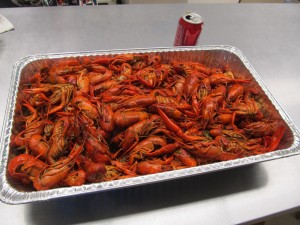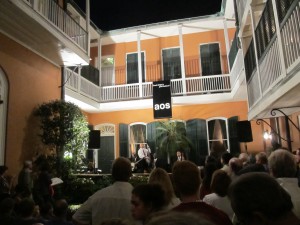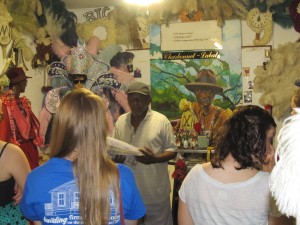I posted the following nearly three years ago. It was an attempt to inform my students of the different attitudes and sensibilities that awaited them in New Orleans. It has been instructive for my students, but it apparently struck a nerve. It is far and away the most viewed posting I have ever made. Happily, most of the comments, especially from those in Southern Louisiana have been extremely positive. And then there are those who will never see anything positive happening in Orleans Parish. I am reposting with a few minor changes and some new photographs, but it remains largely the same.
A note to my students:
Most of you have never been to New Orleans. I grew up in the South, but only geography makes New Orleans part of the South. The people are different and that is wholly a good thing. Most of you are New Englanders. The differences between the two are about as far apart as the 1600 mile van trip you are about to undertake.
I am still learning, but I’m willing to share some of the insights that I have gained over the years. I may not be entirely fluent, but let me try my best to interpret.
People in New Orleans are naturally polite. It’s not artifice; it’s who they are. They smile. They hold doors for you. They call you “baby,” or “shug,” or “darling” because that’s the way they were taught. There’s nothing in it for them, but consider it a good thing for you. Picture a situation in Boston’s North End. You park your car a bit too close to the car behind you. When you come back, the other driver says: “Hey asshole, why’d you block me in?” And there would be gestures. In New Orleans, that exchange might translate to something like this: “Hey bro’, would you mind pulling forward a little so I can get out?”
People in New Orleans are seldom in a hurry. That does mean that they don’t speed on I-10, because they do. But at the same time, they will slow down to let someone merge. At a traffic signal, they might linger a moment – while the New Englander behind them is laying on the horn. The checker at the Rite Aid may be a lot more interested in telling a co-worker about her date, than in ringing out your order. And the more impatient you get, the slower she’ll get. In New Orleans, Friday lunches can take all afternoon. Don’t expect the smaller aspects of life to move any faster.
People in New Orleans will talk to anyone at anytime about anything. In New Orleans, speech is not a mode of communication; it is an art. New Englanders are famous for their economy of words. New England produced President Calvin “Silent Cal” Coolidge. Enough said. New Orleans produced Danny Barker, jazz musician and story teller. He returned home to help carry on the jazz traditions, as much through his words and stories, as his banjo and guitar. In New Orleans, when people ask you “where y’at?” i.e. “how are you?” they really want to know. It is not a pleasantry, it is a conversation starter. And you have to do your part.
People in New Orleans never apologize for having a good time. Remember the Friday lunch. Life in New Orleans can be like that. It’s unmistakable and I think it stems from New Orleans’ precarious existence on the edge. From the beginning, whether it was from spring flood, summer pestilence, fall hurricane, or the threat of attack from another world power, life was fragile. “Hey 8,000 people died of yellow fever this summer, have another drink!” Let’s parade, let’s dance — let’s live for the moment. This sensibility hasn’t always served New Orleans well, especially in the eyes of the puritanical nation in which it resides. In March 2010, I was at a second line parade on a brutally raw and windy Sunday afternoon in a struggling part of the city. As we waited for the procession to come to us, I asked the woman next to me why she out on such an unpleasant afternoon. She opened her eyes and arms wide for expression and said: “this is what we do!
People in New Orleans still appreciate the work of volunteers. When I first came down in 2006, there were few residents to talk to. It was like a war zone and it was clear that any effort was an improvement. Over the years, I’ve been waiting for the welcome to wear off, but at least through August 2013, it has not. In New England, be prepared to be asked: “why are you going down there? What do you mean they haven’t fixed it yet?” On the other hand, people in New Orleans know that 80% of the city was covered in water. The city has lost nearly 30% of its population since 2000, and that is largely from the lack of affordable, livable housing. Be prepared, because New Orleans people will still stop to thank you for what you are doing.



































